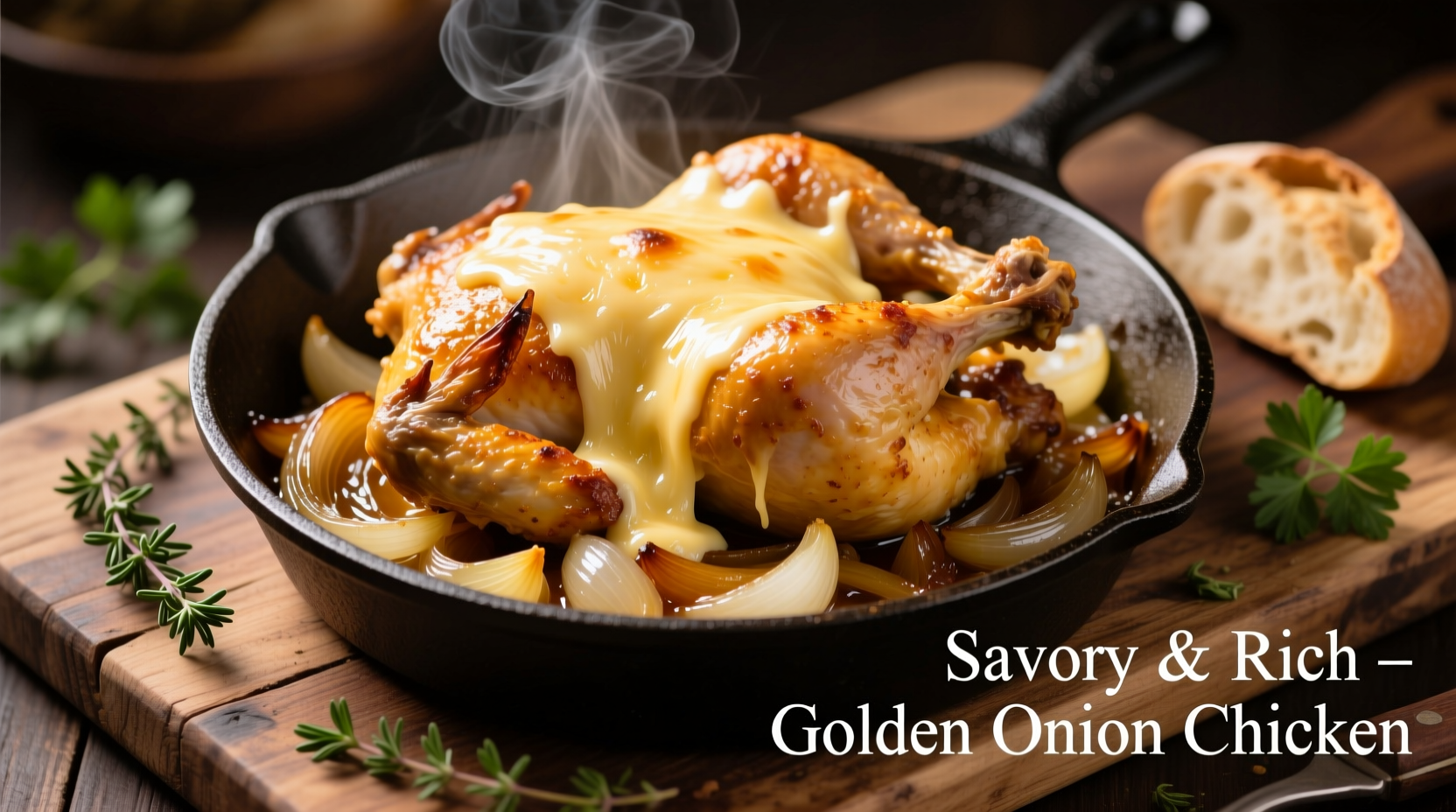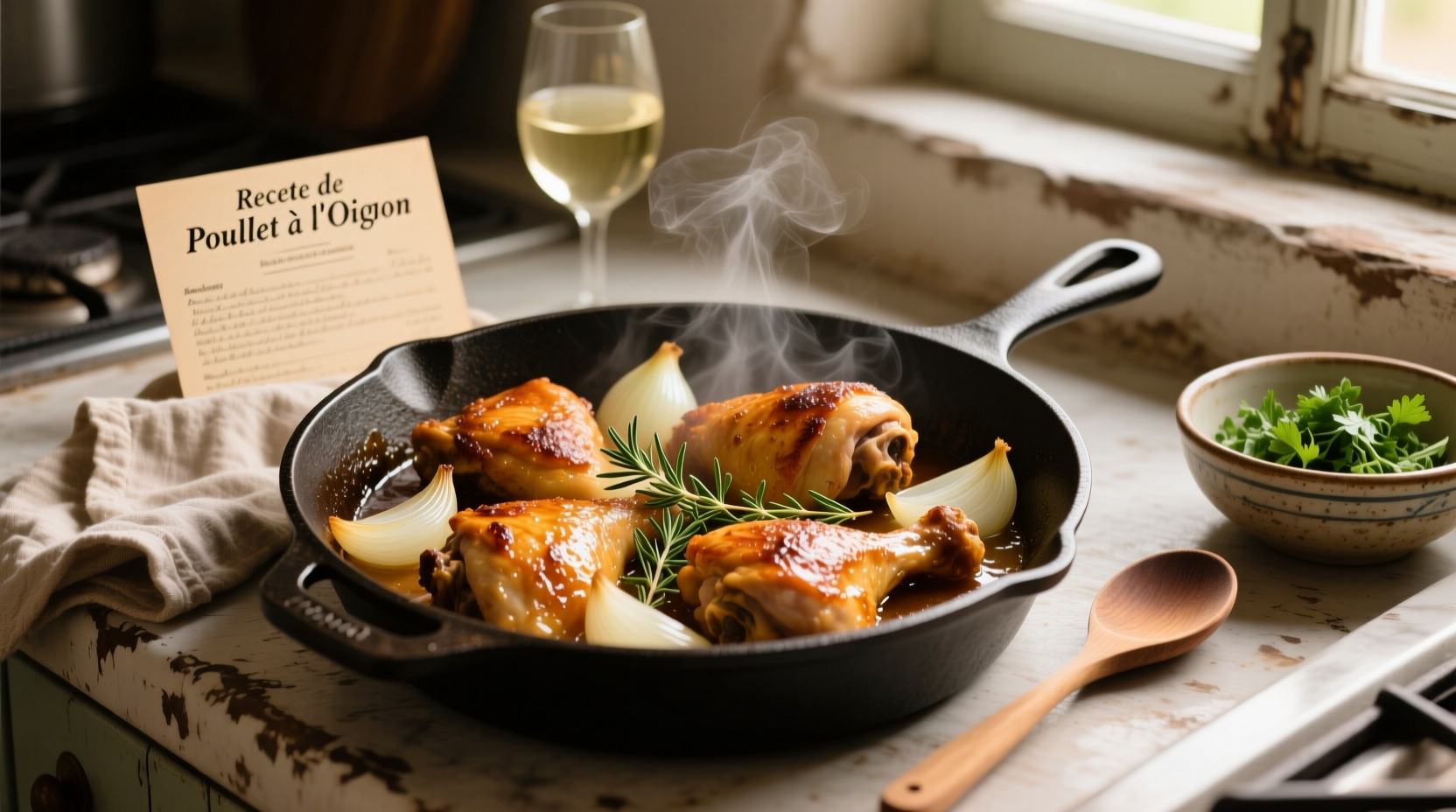Discover the perfect French onion chicken recipe with this authentic, step-by-step guide. You'll get tender chicken breasts smothered in rich caramelized onions and a creamy Gruyère sauce ready in under 45 minutes. This elevated comfort food combines French culinary tradition with approachable home cooking techniques.
Why This French Onion Chicken Recipe Works
French onion chicken transforms the classic French onion soup into a satisfying main course. Unlike many simplified versions, this recipe maintains authentic flavors while being practical for weeknight cooking. The secret lies in properly caramelized onions and a balanced broth-cream sauce that complements rather than overwhelms the chicken.
Essential Ingredients Explained
Quality ingredients make the difference between good and exceptional French onion chicken. Here's why each component matters:
- Yellow onions (3 large) - Their natural sugar content creates the perfect caramelization. Vidalia onions lack sufficient acidity for proper browning.
- Chicken breasts (4, 6-8 oz each) - USDA recommends cooking poultry to 165°F internal temperature for safety. Boneless, skinless breasts provide even cooking.
- Dry white wine (½ cup) - Adds acidity that balances richness. Avoid cooking wines with added salt.
- Gruyère cheese (1 cup shredded) - Authentic French cheese with superior melting properties compared to Swiss.
- Homemade chicken broth (2 cups) - Store-bought broths often contain excessive sodium. Low-sodium versions work if diluted.
Traditional vs. Modern Preparation Methods
| Traditional Technique | Modern Adaptation | Why It Matters |
|---|---|---|
| 8-10 hours slow caramelization | 25-30 minute controlled browning | Maintains flavor depth while fitting modern schedules |
| Beef broth base | Chicken broth with umami boosters | Better complements poultry without overpowering |
| Baked in individual crocks | Skillet-to-oven preparation | Reduces dishes while maintaining presentation |
French Onion Dish Evolution Timeline
Understanding the history helps perfect your technique:
- 18th century - French onion soup appears in Parisian working-class cuisine
- 1960s - American adaptation with melted cheese topping becomes popular
- 1980s - Emergence of French onion chicken as restaurant specialty
- 2010s - Home cooks adapt techniques for weeknight preparation
- Present - Focus on authentic flavors with practical time considerations
Step-by-Step Cooking Process
Preparation Phase (15 minutes)
- Slice onions uniformly (⅛ inch thick) using a mandoline for consistent caramelization
- Pound chicken breasts to even ¾-inch thickness for uniform cooking
- Season chicken with salt, pepper, and garlic powder (½ tsp each)
Caramelization Process (25 minutes)
- Melt 2 tbsp butter with 1 tbsp olive oil over medium heat
- Add onions with pinch of sugar and ½ tsp salt to draw out moisture
- Stir every 5 minutes until golden brown (don't rush this critical step)
- De-glaze pan with white wine, scraping browned bits from bottom
Finishing Touches (15 minutes)
- Sear chicken 5-6 minutes per side until golden (internal temp 155°F)
- Transfer chicken to plate, pour off excess fat from skillet
- Add broth and cream, simmer 5 minutes to reduce slightly
- Return chicken to skillet, top with cheese, broil 3-4 minutes until bubbly

Avoid These Common Mistakes
Professional chefs consistently identify these pitfalls:
- Rushing caramelization - Onions need proper time to develop flavor (minimum 20 minutes)
- Overcrowding the pan - Causes steaming instead of browning (cook in batches if needed)
- Using pre-shredded cheese - Contains anti-caking agents that prevent smooth melting
- Overcooking chicken - Remove at 155°F as temperature rises during resting
Serving and Storage Tips
For best results:
- Rest chicken 5 minutes before serving to retain juices
- Pair with roasted potatoes and green beans for classic French bistro presentation
- Store leftovers in airtight container for up to 3 days
- Reheat gently in skillet with splash of broth to maintain moisture
- Freeze portions for up to 2 months (thaw overnight before reheating)











 浙公网安备
33010002000092号
浙公网安备
33010002000092号 浙B2-20120091-4
浙B2-20120091-4